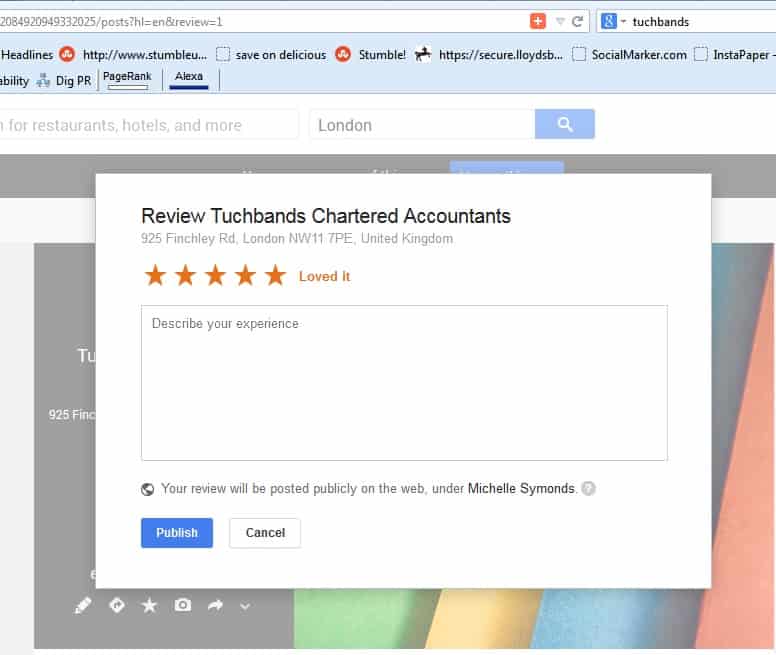Every business would like more good reviews from their customers and for those reviews to be visible online to potential customers. We know that more and more people make decisions to buy a product from a company, or use a service, based on the strength of online reviews, whether the transaction or interaction is online or not. Of course the ranking position of your website in the search listing is still very important, as increasingly is visibility in AI tools like ChatGPT, but so too are good reviews by genuine customers. So customers leaving online reviews should be a key marketing aim.
But the issue for potential customers is knowing which reviews to trust.
For that reason many large companies have been using independent review systems such as Trust Pilot to encourage customers into leaving online reviews.
Systems like Trust Pilot and others contact genuine customers who can then leave reviews via their independent review system; that way companies cannot filter out bad reviews. The chink in this armour is that the company being reviewed is supplying the customer email addresses so there is the possibility of companies simply not supplying the email addresses for any customers who have had a bad experience.
Independent review systems enable your business to set up an automated system that contacts customers a certain number of days after delivery of a product seeking a review. The particular parameters you use are within the control of your business and you can reply to reviews through the same system, but because the reviews are posted to the review system’s website they are seen as more trustworthy by potential customers. The reviews can, of course, also be displayed on your own business website.
If you run a Google Ads campaign you can use the star ratings given on these review systems in the advert. A potential customer can click on the rating link and read the reviews before making a purchasing decision. So there are plenty of advantages to using an independent review system.
However, there are also a number of reasons why an independent review system might not be right for your business:
- You don’t run an Ads campaign so can’t benefit from the displayed star ratings in an advert.
- Independent review sites are not currently widely used for some industry sectors so your star ratings shown on their website may not appear near the top of search listings so will not be visible to online searchers to influence their decision. Even if your customers are leaving online reviews!
- Your business is a service business such as an accountants or lawyers where you provide an ongoing service so there is no obvious point at which to seek a review from a client, thus negating the benefit of an automated system that sends emails a certain number of days after a product purchase.
- Small businesses may find it hard to justify the regular monthly costs of an independent review system.
If any of these apply to your business what are the alternatives that provide the trust that potential customers are looking for online?
Well, there are a number of websites, not specifically designed as review sites, where anyone can enter a review of a business, provided they have registered. A few of these sites are commonly found near the top of search listings with business star ratings shown and are trusted by the online community. (Note that this does, of course, depend on the search terms being used).
Some of the ones to look out for are:
- Google Business Profile (naturally)
- Yelp
- Yell
Google Business Profile Reviews
Most small businesses will by now have a Google Business Profile, (and if you haven’t you should have), on which customers can leave a review of your business and a rating between 1 and 5 stars.
Verified businesses will show in the search listings for brand searches on the right hand side of the main listings. This will show how many Google reviews you have. When you have approximately 6 or more reviews there will also be a star rating shown alongside:
Local (map) results in Google will also display this information in a slightly different format:
But just how can you persuade customers to leave a review?
Firstly, by making it easy for them.
You can do this by inserting a direct link to your Google Business Profile in the email you send out asking for feedback.
If your customer or client already has a Google account (more on this in a moment) and they are already logged in, they will then be taken straight to your review box, which looks something like this:
Many people have a Google account without really being aware that they have. Did you know that Gmail, Android, Blogger and YouTube accounts are all Google accounts and one account covers all Google services?
If someone is not logged into a Google account or does not have one they will be taken to a screen where they can either login or create an account. Not ideal but better than not asking for a review as people might decide to login or even set up a Google account.
And once you have made it easy for customers to leave a review of your business tempt them into doing so by offering a small gift such as chocolates or wine, and don’t forget a reminder a week later. Customer reviews are a powerful tool in your online marketing efforts so are worth the effort to obtain them.
And a final note about bad reviews – no company is perfect and provided you respond to the review online and rectify any problems this will show an honest approach to customer reviews.
So what are you waiting for send out those emails and start building up a list of customer reviews and start seeing your star rating appear in search listings.
Jo brings diverse experiences into her role as a Content Specialist, having spent 15 years in logistics before carving a highly successful career as a writer and strategist. Her unique blend of business, law and copywriting expertise allows her to translate complex concepts into engaging and accessible content that resonates with target audiences.




